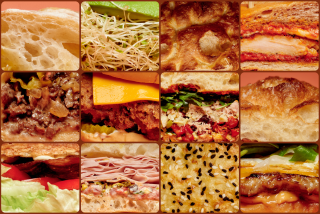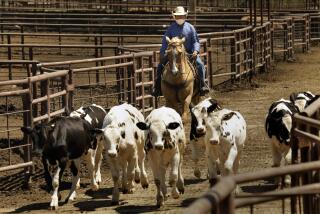Sandwiches are killing the environment
These days, it seems like everything that’s convenient for humans is inconvenient for Mother Nature - even sandwiches. That’s right. The way you eat your lunchmeat could be impacting global warming. A group of researchers at the University of Manchester analyzed the environmental impact of 40 different types of sandwiches, and the results have sandwich lovers everywhere dropping their jaws.
Of course, almost all food we eat these days contributes to global warming. Processing, production, farming, manufacture... For everything and anything you pay for at the grocery store, there’s another invisible price tag that’s costing Earth’s climate.
According to their research, British scientists deducted that the stuffed slices of bread are producing the same amount of carbon emissions annually as 8.6 million cars - and that’s counting the sandwiches from Britain alone. According to the British Sandwich Association, the country consumes 11.5 billion sandwiches per year. Approximately half of those sandwiches are constructed at home, while the other half are bought premade.
Not all sandwiches had the same effect. Sandwiches crafted on your counter are better for the planet than sandwiches you buy premade and wrapped. But also, a simple PB&J has nowhere near the environmental impact of a triple-decker pastrami on rye. It’s all in the production.
Specifically, the research team evaluated how the meals were made, packaged, transported, and stored, as well as the waste produced in making them. They also accounted for the sandwiches that no one even got to eat - the stale or outdated scraps left over at the end of the day.
The sandwiches with the absolute largest carbon footprints were premade, all-day breakfast sandwiches - we’re looking at you, fast food industry. They contain eggs, bacon, and sausage, all of which are environmentally costly to produce, and need to be refrigerated until they are purchased.
The sandwich with the smallest carbon footprint was the humble ham and cheese - made at home, of course.
Of course, there are more than 40 types of sandwiches in the world, and we aren’t sure which combinations made the cut. So we’re left with a few questions. Did the researchers include hamburgers and hot dogs? Are those foods even sandwiches at all?
What we do know is that there were trends - patterns to follow if you’re trying to eat lunch while being environmentally friendly. For one, lettuce and tomato were also found to be significant contributors to carbon emissions. Some people think lettuce and tomatoes ruin sandwiches anyway, so that swap might not be all bad.
Additionally, meat and dairy products are worse for the environment than most plant-based foods. Choosing a vegetarian or vegan sandwich option now and then could do the polar bears a big favor.
“Supermarkets need to step up to the plate and make sure their sandwiches aren’t toasting the planet,” environmental activist Clare Oxborrow told the Independent. “It’s almost impossible to find a plant-based filling among the meaty and cheesy offerings.”
We imagine America’s sandwich footprint is even larger than Britain’s - we take our sandwiches very seriously, as you can see from this gallery of the best sandwich in every state.
more sandwiches
- 20 Life-Changing Sandwiches You’ve Never Heard Of
- America’s 25 Best Chain Sandwich Shops
- America’s Most Outrageous Grilled Cheese Sandwiches
More to Read
Eat your way across L.A.
Get our weekly Tasting Notes newsletter for reviews, news and more.
You may occasionally receive promotional content from the Los Angeles Times.










